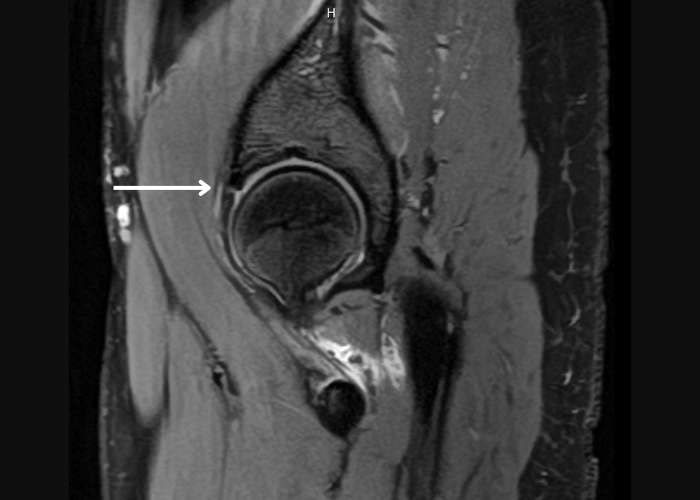What is a hip labrum tear?
The hip joint is a ball-and-socket type joint that is formed from the connection of the head of the femur (thigh bone) and the socket portion of the acetabulum (pelvis). The hip labrum is a fibrocartilaginous tissue that lies in the socket of the acetabulum creating a seal between the head of the femur and the pelvis. The hip labrum stabilizes the hip joint by deepening the acetabular socket and restricting the movement of the femoral head. It also functions as a shock absorber to equally distribute the stress loaded onto the hip joint in addition to joint lubrication. A tear within this cartilage ring can result from twisting or pivoting movements that are frequent in sports such as golf, ballet, or soccer. Structural abnormalities of the hip joint can generate excessive wear and tear of the hip labrum and ultimately cause a hip labrum tear. Hip labrum tear specialist, Dr. Leslie B. Vidal, offers patients in Vail, Eagle, and Summit County and those in the surrounding Denver area both surgical and non-surgical treatment options for a hip labrum tear.
What causes a hip labrum tear?
Tears to the fibrocartilaginous tissue called the labrum are often the result of a pivoting or twisting movement. Sports such as golf, ballet, soccer, skiing or snowboarding can allow the head of the femur to twist too far away from the acetabulum, which can cause the hip labrum to tear. The labrum can also be damaged over time as we age. Hip impingement can cause damage to the labrum from an improperly formed femur. The condition, called femoroacetabular impingement (FAI), can cause damage and tearing or the wearing down of the labrum over time.
What are the symptoms of a hip labrum tear?
The most common symptoms of a tear in the hip labrum are:
- Pain felt in the groin area, especially when the hip is flexed and the leg is turned inward
- Pain that radiates to the outside of the hip
- Stabbing and intense pain
- A locking or catching sensation
- Dull ache in the joint
- Joint Stiffness
- A change in gait (limping)
- Decrease in range of motion
- The feeling that the hip is moving out of joint
How do I know if I have a labrum tear in my hip?
Dr. Vidal will obtain a thorough patient history as well as what may have occurred prior to the visit. There are several tests Dr. Vidal will perform during the visit to test the hip and pain levels. An MRI will be requested, which allows her to see the soft tissues and structures within the joint. She may also have X-rays done to see if the femur or acetabulum are worn or misshaped. Most hip labrum tears are seen on an MRI which can also help Dr. Vidal determine the best treatment options.
What is the treatment for a torn hip labrum?
Non-Surgical:
Dr. Vidal prefers conservative treatment whenever possible. NSAIDs (non-steroidal anti-inflammatory drugs), rest, hot and cold therapy may help alleviate hip pain. Some patients may benefit from a steroid injection which can help reduce swelling and allow the labrum to heal. Physical therapy is usually recommended to help the patient build the necessary muscles to support the hip and allow it to heal.
Surgical:
If non-surgical or conservative treatments fail to alleviate pain and restore the full function of the hip, surgery may be necessary. Athletes often prefer the surgical repair of a hip labrum, which will allow them to get back to the sports they love quicker.
Some patients have a hip condition called FAI, or femoroacetabular impingement which can damage the labrum. For these patients, surgery is important to avoid further joint damage. It is vital to seek out an orthopedic hip specialist like Dr. Vidal
Hip Labrum Tear Specialist
Are you a downhill skier, or do you participate in sports like hockey, ballet, football, or soccer? Sports that require repetitive pivoting motions can cause a tear in the hip labrum. The hip labrum is important to the stability of the hip joint. If you have hip pain, you should see a hip labrum specialist. Doctor Leslie Vidal provides diagnosis and both surgical and nonsurgical treatment options for patients from Vail, Eagle and Summit County, and those in the surrounding Denver area, who are experiencing hip pain and who may have torn their hip labrum. Contact Dr. Vidal’s team today!


